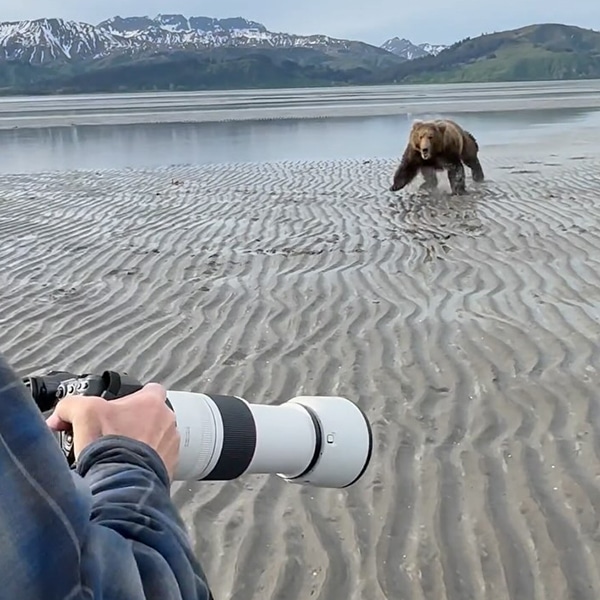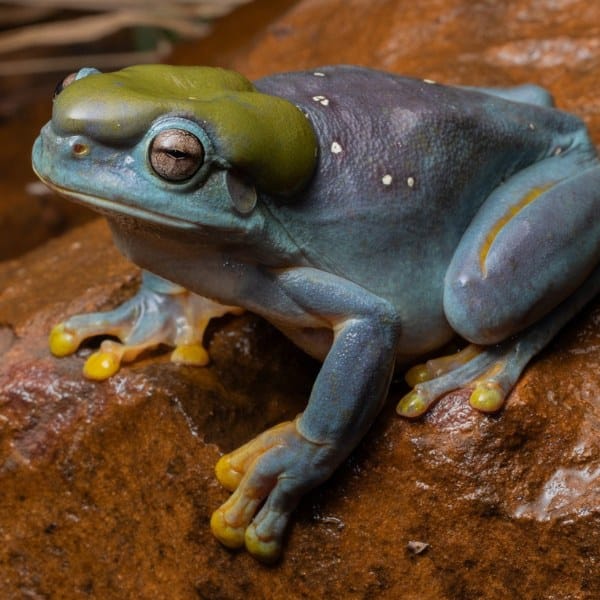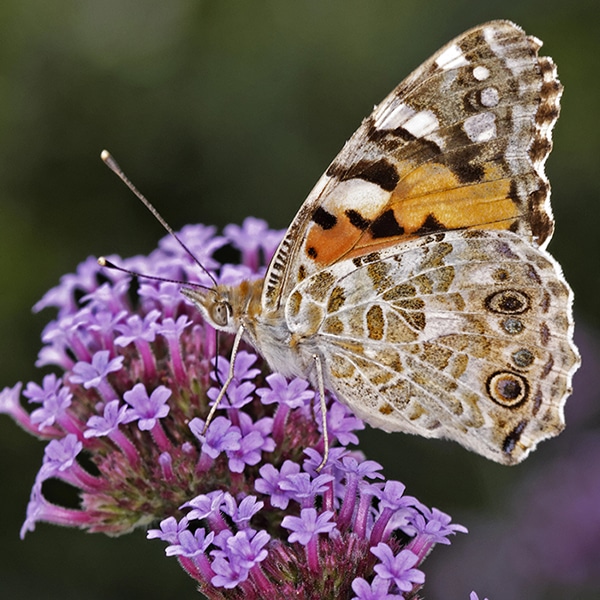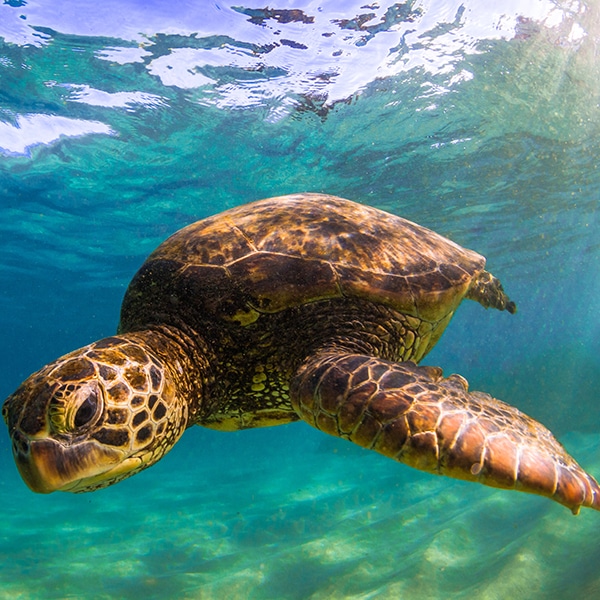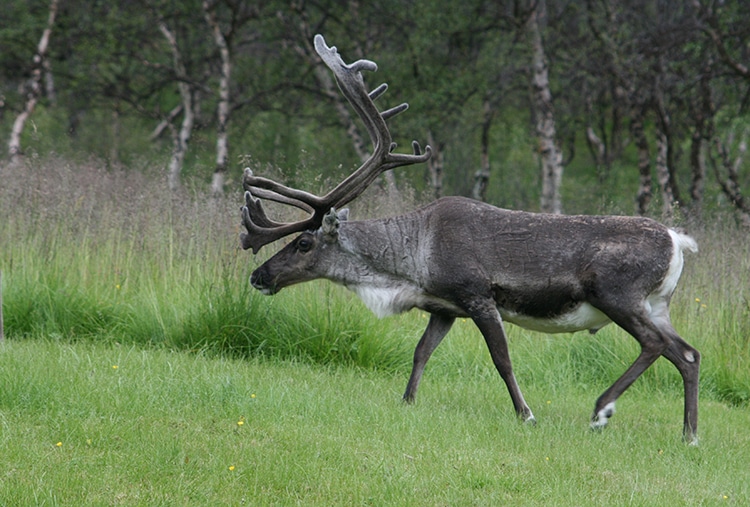
A reindeer in the summertime. (Photo: Are G Nilsen via Wikimedia Commons, CC BY-SA 3.0 DEED)
Santa's reindeer must be tired from Christmas exertions, but reindeer around the world are preparing for a different feat. They must survive the long arctic winter of little daylight and freezing temperatures. Their northern peers choose different paths to stay alive, including hibernation and packing on the fat for leaner days. For reindeer, the latter technique is critical to survival. A layer of fat is protective and sustaining—and that fat comes from ambitious eating. A recent study in Current Biology discovered the reindeers don't waste any time. Instead of choosing to eat or sleep, they can do both: ruminating over their cud while they rest.
The study tracked the bodily functions of four captive Eurasian tundra reindeer in Norway. Reindeer sleep about the same amount in summer and winter months, but they must eat much more in the summer while supplies of food last. The reindeer were observed over four days at summer and winter solstices, to track their behavior during the extremes of the year. Electroencephalography (EEG) brainwave imaging discovered the reindeer's brains produced waves just like those in non-REM sleep while they chewed their cud, a process known as ruminating. The deer also seemed dozy, less likely to react and more sedated.
The ruminating did not tire the reindeer, instead they were able to rest. “I think that’s a step further to show, at least indirectly, that sleep during rumination also has a function, and actually that if they sleep there they can save some time and recover brain functions during rumination,” Melanie Furrer, a lead author of the paper, explains to Smithsonian Magazine. In fact, this sleeping and chewing allows the reindeer to put in the precious feeding time they need to prepare for each long winter.
The discovery of this special reindeer talent adds to the corpus of scientific knowledge on sleep. “We need to be open-minded that there is not just one kind of sleep, the way that humans sleep, but there are other ways to sleep,” says Vladyslav Vyazovskiy, a sleep physiologist at Oxford who did not participate in the research. “The traditional way to look at it is that when you’re sleeping, you’re not eating. But in this case there’s no time to sleep. They must find a clever way to combine the two, and this is what they do.” These multi-talented creatures are certainly an efficiency inspiration.
Reindeer sleep while they chew their cud, a process known as ruminating, in order to rest and put on fat for the long winter.
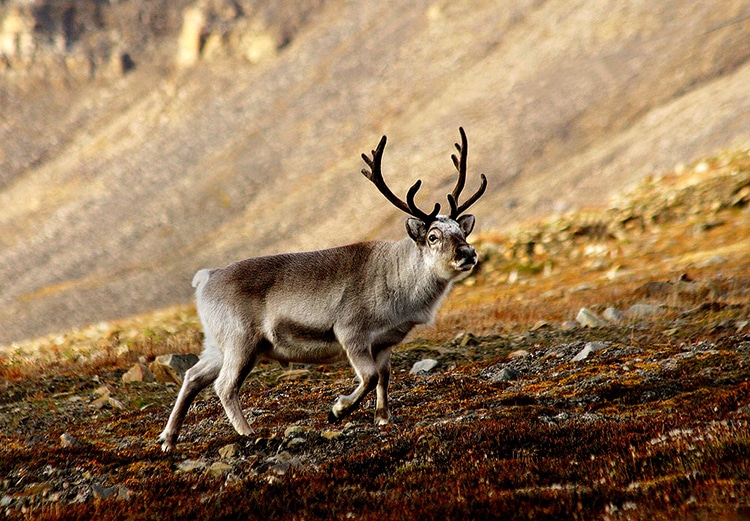
Reindeer are clever creatures. (Photo: Perhols via Wikimedia Commons, CC BY-SA 3.0 DEED)
h/t: [Smithsonian Magazine]
Related Articles:
Kind Strangers Send 64 Pairs of Tiny Shoes to Chicken With Missing Toes So He Can Walk Around Easier
Elephants Have Been Found to Give Each Other Names in the Form of Rumbling Sounds
Watch a Group of Dolphins Swimming in Bioluminescent Waters off the Coast of California
Rare Saharan Antelope Is Brought Back From the Brink of Extinction











































































